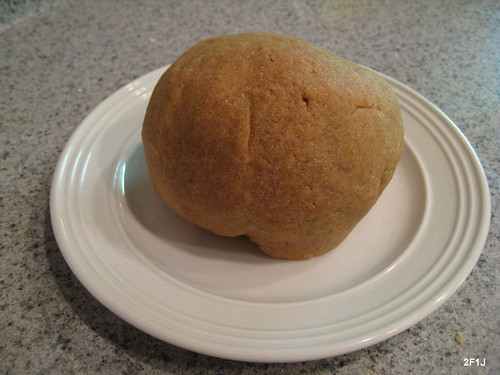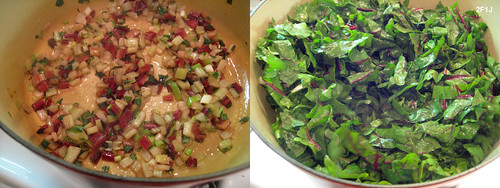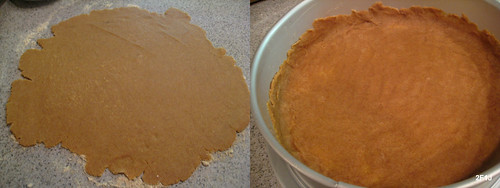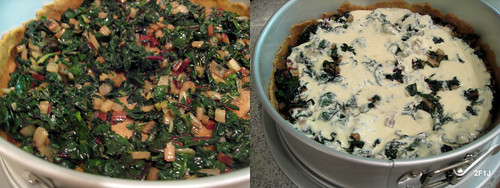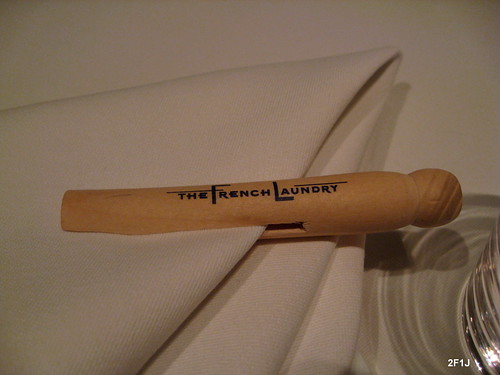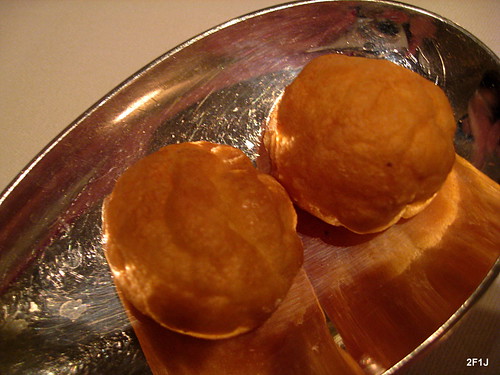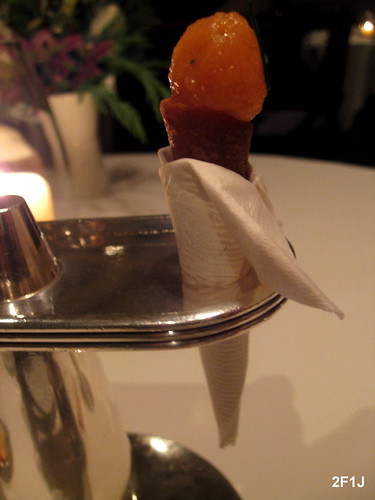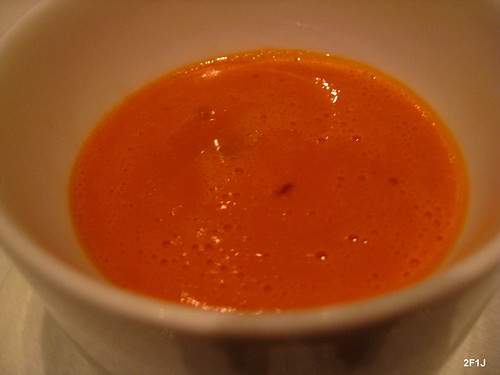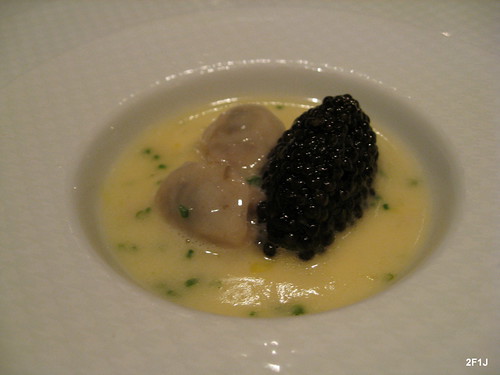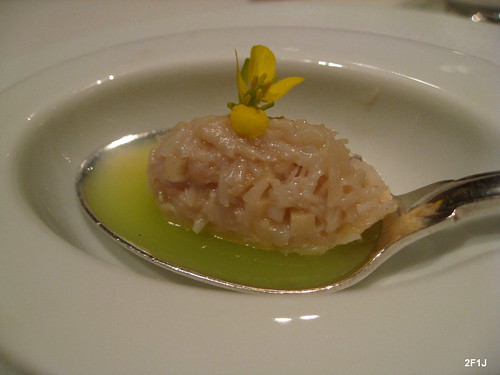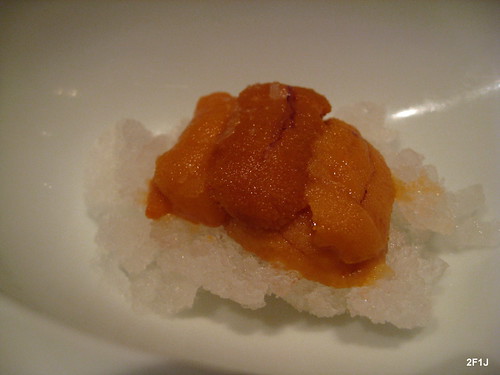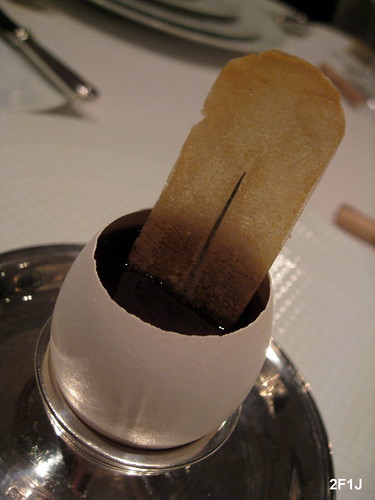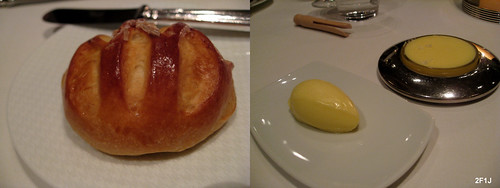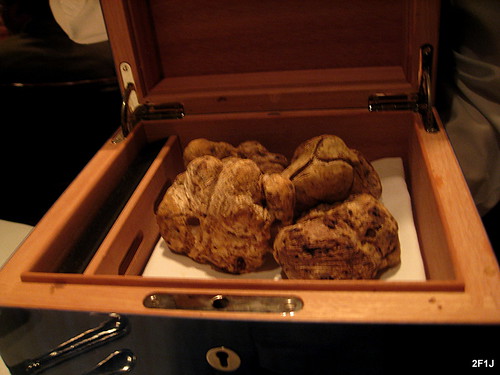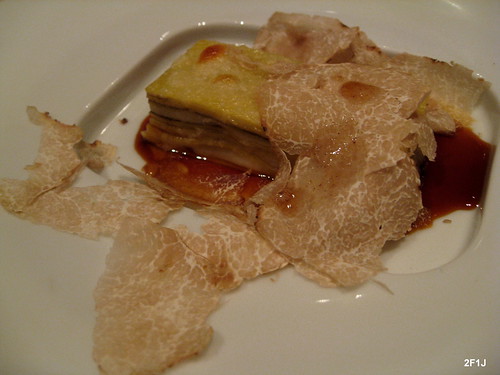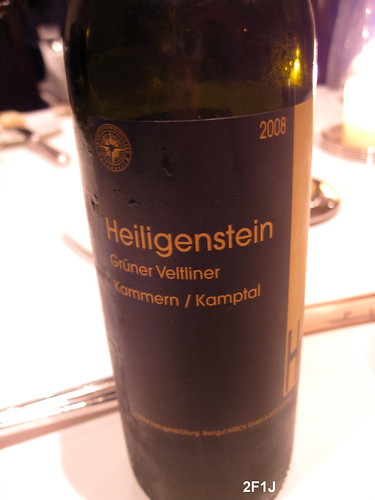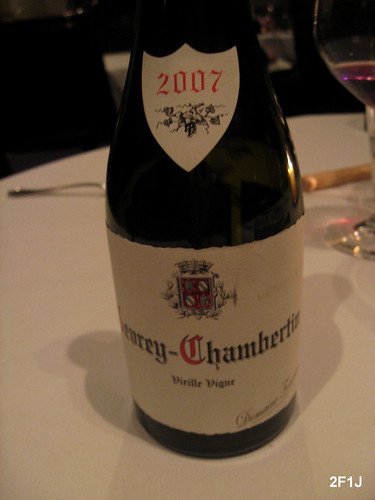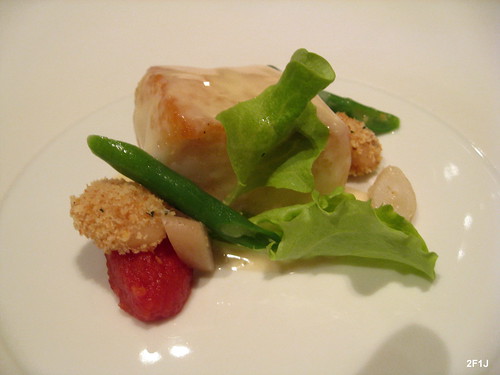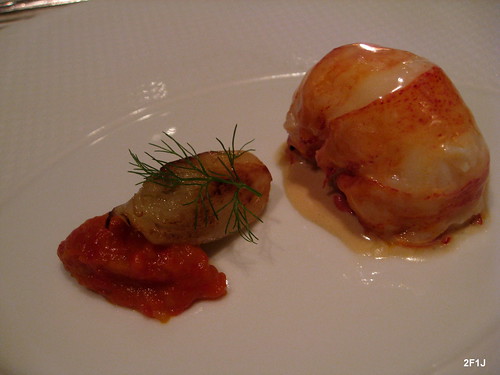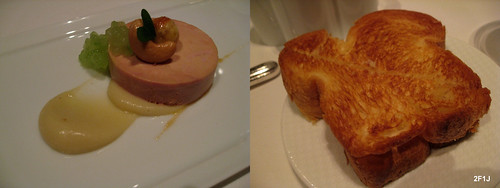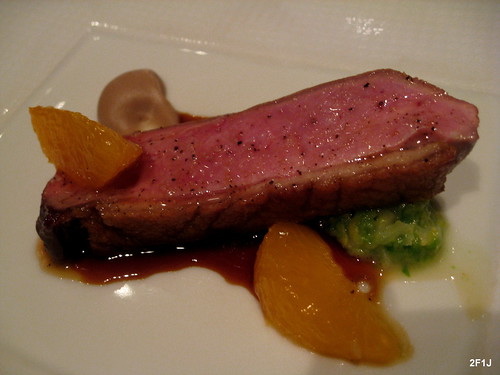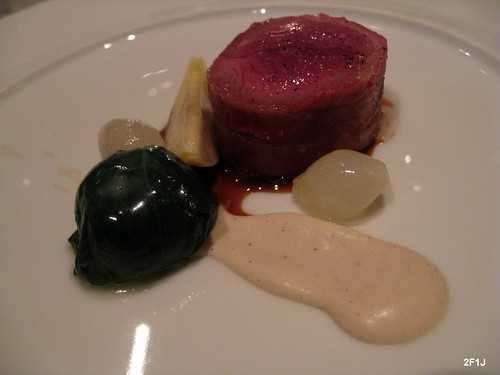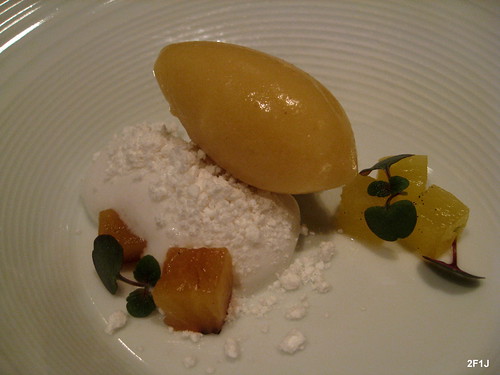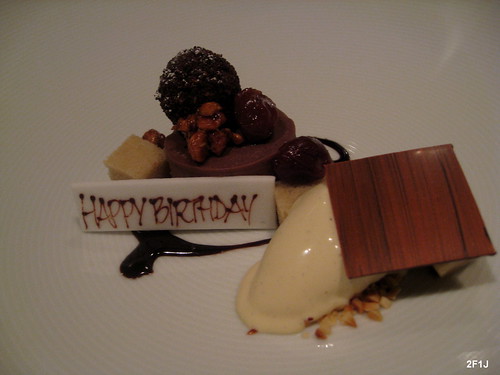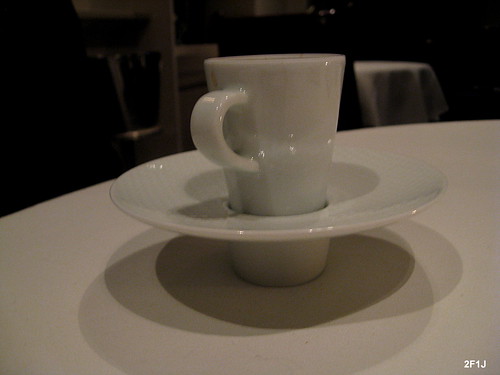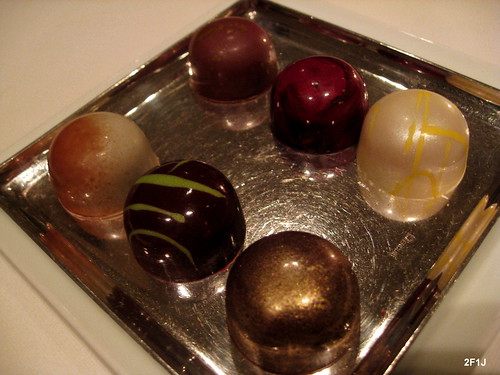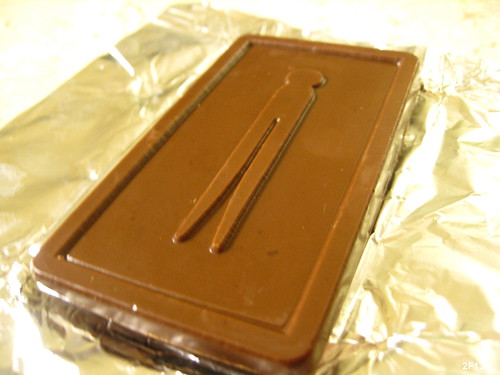In today’s media-driven world you constantly hear and read about new interesting restaurants opening or closing somewhere. If you are interested in food it is really hard not to get continuously bombarded by news on discussion boards, blogs or magazines about new restaurant trends emerging or new chefs making an impact in the culinary scene. And so it shouldn’t come as a surprise that like many foodies we also have many different lists of interesting restaurants we want to visit all over the US and the world. At the same time every foodie seems to have the one special restaurant which fascinated them early on, which they always wanted to visit and which is their ultimate destination. Similar to explaining why a certain music band is so special or a why a painting has this particular fascination it is often hard to explain why one restaurant sticks out to all the others. Of course the food and cuisine is a major factor in the interest for a restaurant but real fascination goes far beyond and includes also the mindset and philosophy of the chef, the focus on ingredients and techniques and even the location. Since moving to California about ten years ago and getting highly interested in high-end restaurants this special restaurant for us was always Thomas Keller’s French Laundry in Yountville.
Thomas Keller was born in California but lived most of his youth in Palm Beach, Florida. During this time he started to work during summers or after school first as a dishwasher at the Palm Beach Yacht Club but also soon as a line cook which ignited his interest in cooking. During summers he also started working at the Dunes Club in Rhode Island where he met his key mentor – Chef Roland Henin. Henin was important in exposing to and teaching him French cuisine but also to start developing his own philosophy of cooking. After working several cooking positions in Florida Thomas Keller started working at La Rive in the Hudson Valley River valley where he had for the first time larger responsibilities but also the possibility to work more with local and seasonal produce and farmers. Unable to buy La Rive Keller decided to hone his skills by working in several Michelin starred restaurants in France like Guy Savoy and Taillevent. After returning to New York he worked at La Reserve and Restaurant Raphael before opening in 1986 his first own restaurant – Rakel. Rakel got good reviews but due to the hard financial times the restaurant didn’t survive for a long time. He then had a period of time where he worked at different restaurants in New York and Los Angeles before he finally found in 1992 the French Laundry at that time owned by Don and Sally Schmidt. After raising money for quite some time Thomas Keller could finally purchase the French Laundry and open it in 1994. Even though since then Thomas Keller opened several other successful restaurants for us the biggest fascination always focused on the French Laundry. Not unlike with music albums of rock bands the earliest releases often represent the purest and most honest approaches and tend to give the best chances to experience the original work and philosophy.
Even though we visited many high-end restaurants over the last years and the French Laundry was for a long time high on our restaurant list we somehow never really started seriously tackling getting a reservation at the restaurant. But recently we decided to go on a three week culinary trip to the Bay area and felt that it was finally time to experience the French Laundry. After some preparation we were able to get a reservation on our preferred day for the last seating – what better day to choose for our first visit than a special birthday celebration. Like we have done with many restaurants before we contacted the French Laundry and we wanted to give the chef absolute creative freedom and asked for an earlier seating to have a chance for a special tasting menu without any limitations. After some extended phone discussions over a few weeks we finally got a table for the first seating and a promise to have a special menu on our visit which turned out to be a memorable extended 18-course tasting menu at the French Laundry highlighting why this restaurant had and still has such an impact on the culinary scene.
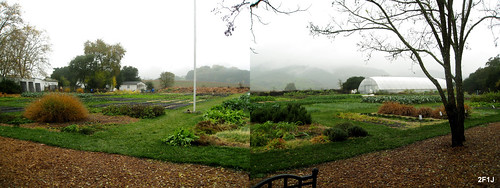
The French Laundry is located in the small village of Yountville a few miles north of Napa. Yountville seems to be existing mainly to host a large number of restaurants and hotels for its small size. Yountville is also the epicenter of the Thomas Keller culinary empire with French Laundry, Bouchon, Bouchon Bakery and Ad Hoc within walking distance. Whereas all other three restaurants are closer to the center of the village French Laundry is a little bit more outside. Across from the French Laundry are the restaurant’s vegetable gardens which should play an important role for many of the ingredients on our visit. These gardens are quite impressive with their large variety of often unusual produce.

The French Laundry restaurant is in a historic building which was built more than one hundred years ago as a saloon before it was converted in the 1920s into a French steam laundry. The building was renovated in 1978 before it was used as a restaurant. If one wouldn’t know that the building was used as restaurant it would easily go through as a residential building. Only a smaller sign reveals the true purpose of the building.
The restaurant is spread out over two floors with the main dining room on the lower floor. The maitre’d knew of our long tasting menu and gave as a nice four top in the corner of the main room. We were once asked if we were interested to see the menu before or if we trust the chef and just want to be surprised. Obviously we just wanted to sit back and start the journey into the culinary world of Thomas Keller and the French Laundry.
1st Amuse Bouche: Gougères
Pâte à choux filled with warm aged Gruyère mornay sauce. Very light pillows filled with a slightly salty crème which still showed the typical aged Gruyère flavor. A rather classic French start to the dinner and for us a kind of palate cleanser for the coming dishes.
2nd Amuse Bouche: Scottish Salmon Coronets
One of the signature amuse bouche’s of the French Laundry. The cone had a buttery and soft texture with some sesame seeds. The salmon was almost pate-like with a delicate taste. The bottom tip of the cone was filled with some crème fraiche to give it a slightly tangy finish.
1st Course: Nantes carrot velouté, medjool date, marcona almonds and cilantro
As the next course the server put small bowls of an orange soup in front of us and informed us that the carrots for this velouté were harvested just a few hours ago in the gardens across the street. This carrot soup was unlike any other carrot soup we had before. It had a very intense carrot flavor like it was made out of carrot extracts but at the same time a velvety and light texture. The dates gave the soup just the right sweetness to balance the flavors and almond added some nice textural change. We could have easily eaten a large bowl of the velouté.
2nd Course: “Oysters and pearls” - “Sabayon” of pearl tapioca with island creek oysters and white sturgeon caviar.
Perhaps the most written about savory course at the French Laundry and one of the few courses which are part of nearly all tasting menus. Even though we wanted to experience the French Laundry as a whole event we were looking forward to finally try this dish – and it didn’t disappoint. The creamy and rich sabayon laid the foundation for the dish and the tapioca supported this richness with its texture. The perfectly cooked oysters had a wonderful sweetness whereas the quenelle of caviar provided the right balance of saltiness. It’s easy to understand why this dish has such a reputation as being a showcase for Thomas Keller’s cooking as it is a perfect combination of texture, flavor and creativity. The use of a mother-of-pearl spoon to serve the dish fits perfectly into the picture.
3rd Course: Salad of Dungeness crab, apple gelée and “fines herbes”
Another course which demonstrated Thomas Keller’s cooking philosophy – on one side high quality ingredients like cooked Dungeness crab which was presented in a way that its natural flavors speak for itself. At the same time he uses every kind of technique necessary to add components to the dish which complements and enhance this flavor and brings it to a new and often unexpected level. Here the slightly sweet and tangy apple gelée was key to the success of the dish.
4th Course: Hokkaido coast “uni” with sake granité
Over the years we really have learned to love uni and its unique flavor reminding us of ocean, salt and sea air. Normally we had Santa Barbara uni which has a light yellow color whereas the Hokkaido uni had a much darker orange color. The flavor of the Hokkaido uni was similar to one from Santa Barbara perhaps a bit more pronounced and stronger. The sake granite was a good addition as itself had similar to the uni first a slight sweetness which changed after melting in the mouth to some bitterness without overpowering the delicate flavor of the uni.
5th Course: “Ris de veau en croûte” with “pruneaux d’Agen”
We had to smile when the server brought this dish to the table as its shape reminded us of a caterpillar. The flaky, light puff pastry shell broke easily to reveal its tasty inside – perfectly seared veal sweetbreads. Sweetbreads can easily be overcooked but this version had the right consistency – not too soft without being too dry. The dish got some refreshing fruitiness from the prune sauce made out of the famous prunes from the region of Agen in France.
6th Course: Hen egg custard, ragout of Périgord truffles
This plain looking egg had some amazing content – at the bottom was white truffle custard which was topped with a ragout of black truffles made out of veal stock. This creation was crowned by a chive potato chip perfect for mixing the tasty mixture. Not only could you smell this course long before it reached our table but was an impressive flavor explosion when eaten from the different truffles and the veal stock.
7th Course: Salad of French Laundry new crop potatoes, baby beets, broccoli and horseradish mousseline.
Another dish in which the garden of the French Laundry across the street played a major role. A few new potatoes were slightly roasted so that the roasting flavor didn’t overwhelm the tastes of the different vegetables. Especially the baby beets added some nice earthy component to the dish. The horseradish mousseline helped to add some mild spicyness.
All these courses so far really didn’t need any bread but now we were presented with the pain au lait from the Bouchon Bakery down the street. This warm and buttery role had a wonderful soft texture and was accompanied by two different butters - an unsalted goat’s milk butter from Andante Diary in Petaluma and a whipped salted cow’s milk butter from Animal Farm in Vermont.
Before bringing the next course our server came to our table and presented this – white truffles from Alba. The smell was so strong that people at other tables turned around to look at our table.
8th Course: Castelmagno cheese “lasagna” with white truffles from Alba
The lasagna was a good vehicle for the white truffles. Many layers of perfectly al dente pasta where covered in noisette sauce which helped to bring out some of the truffle flavor. We were a little bit surprised that despite the very strong aroma of the truffle and the generous slices the actual truffle taste was quite subdued.
For the first part of the menu we decided on a Gruener Veltliner – Hirsch, Heiligenstein, 2008 – which was a light-bodied wine with some acidity and some green apple and lemon aroma.
The second part of the dinner was accompanied by a Burgundy – Denis Mortet, Gevrey Chambertin 2007 – which had some quite strong berry flavors, some earthiness and a long aftertaste.
9th Course: Sautéed fillet of striped bass, razor clams, butter beans “en persillade”, San Marzano tomato compote, petite lettuces and extra virgin olive oil emulsion.
Perfectly cooked striped bass filet was tender and flaky, the razor clams were also tender but still had some “bite” whereas butter beans remained, as you would expect by their name, soft and buttery without being mushy. The “en persillade” coating, bread crumbs and parsley, was a nice textural change as were the “al dente” haricot verts. Key component of this dish was the tomato compote which brought the dish together with its acidity and slight sweetness.
10th Course: Sweet butter-poached Maine lobster tail, piperade, young fennel and “sauce Noilly Prat”
A large piece of succulent lobster tail which had the wonderful slight sweetness of perfectly poached lobster. The soft piece of young fennel added unexpected slight anise flavor which worked nicely with the Noilly Prat based sauce. Similar to the tomato compote in the course before here the piperade helped to bring the dish together with its more subdued acidity.
11th Course: Moulard duck “foie gras au torchon”, Gros Michel banana, celery, cashew, oxalis and honey-banyuls “gastrique”
Thomas Keller is well known for his great dishes including foie gras, and this classic foie gras au torchon was no exception. Wonderful buttery foie gras smeared on the warm brioche showed its characteristic melt-in-your-mouth livery flavor. The foie gras was outstanding but what really elevated the dish were the “condiments”. Foie gras is often accompanied by some sweet and savory components but it was first surprising to see bananas and celery with this foie gras and we were initially skeptical if it would work. After just a few bites it was clear that this was a fantastic combination. The banana puree and the celery provided just the right amount of sweetness with some savory undertones without being cloying and worked nicely with the foie gras. The roasted cashews added some textural variety. After we had eaten about half of our brioche the server brought us new warm pieces of brioche to ensure the best foundation for the foie gras.
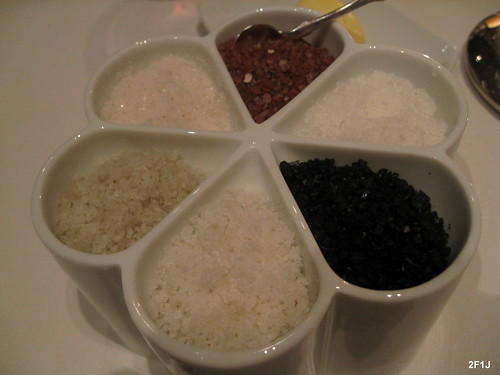
For this and the next few courses we were provided with an array of different salts. It was really fun to taste these and it was astonishing how such small amounts of “impurities” have not only such an effect on the color of the salt but also the flavor.
12th Course: “Aiguillette” of Liberty Farm pekin duck, melted cabbage, Satsuma mandarin, chestnut purée and ginger”jus”
An interesting “asian” take on duck – very tender sous-vide cooked duck breast where especially the ginger-infused jus gave the dish an “asian” touch which was intensified by the chestnut puree. The sweetness of the Satsuma mandarin helped to cut through the fat of the duck.
13th Course: Broken Arrow Ranch venison, Hobbs’ bacon, arrowleaf spinach, flowering quince, white pearl onion and juniper-scented “soubise”
Very tender vension wrapped in bacon was rather classical accompanied, as game often does, by a juniper-scented sauce. The small ball of arrowleaf spinach was not only a nice visual variety in this dish but also helped to lighten up the dish.
14th Course: “Sweet potato pie”, “Cavatina”, marshmellow, pickled huckleberries, watercress and black winter truffle
Instead of an “official” cheese course we were served this combination of a dessert and a cheese course. This was a cheese cake made out of cavatina goat cheese from Andante Diary and had a pronounced, slightly salty, typical goat cheese flavor. The pickled huckleberries and the black truffle sauce were similar to what you expect as condiments for a cheese course. An interesting and well executed course but we felt that a regular cheese course would have been a better progression between savory and sweet courses and that this course didn’t really fit in at this point of the tasting menu.
15th Course: Feijoa sorbet, “tres leches”, coconut and pineapple
This was the first time for us that we had feijoa which is also known as pineapple guava or guavasteen and it had an interesting flavor combination of kiwi and papaya with some slight banana flavors in the background. It matched perfectly to the light tres leches cake. The coconut powder and the lightly roasted pineapple completed this very refreshing and light dessert which was an outstanding start for the sweet part of the tasting menu.
16th Course: “Coffee and doughnuts”, cinnamon-sugared doughnuts and “cappuccino semifreddo”
The most famous dessert of the French Laundry – wonderful light freshly made and still warm doughnut and doughnut hole with a light cinnamon flavor which was perfectly matched with the espresso semifreddo. The popularity of this dessert is not surprising and fully justified.
17th Course: Gianduja chocolate “ganache”, Guiness “génoise”, sour cherry, hazelnut and malt ice cream
As the last dessert we were presented a plate with a “collection” of different “classic” desserts like sponge cake, ganache and malt ice cream which all by itself were already great but eaten together really showed a nice variety of complementing flavors.
18th Course: Granny Smith cake with streusel
When we thought that we were finished with our tasting menu one of our servers came, presented us with these cakes and mentioned that the kitchen thought we would like to have another dessert. How can you not like such a classic approach to an apple cake – light, fruity and with a good balance between sweetness and sourness of the apple – a perfect ending to the dinner.
The espresso was brought in unique cups which according to our server are nicknamed “flying saucers” by everybody and it’s easy to see why. The espresso was surprisingly good for restaurant espresso with a good crema.
Mignardies: And the night ended with some tasty treats
Before we left the French Laundry we were given several bags of shortbread cookies and chocolate which we would enjoy over the next few days
We were really looking forward over several years to visit the French Laundry but at the same time once we scored a reservation we were also a bit anxious if we would be expecting too much and ultimately be disappointed. It was similar to liking a rock band for many years and then finally meeting the musicians in person, and quite often you might find out that the imagination is better than the reality (except when we met the Scorpions last year). But we were very happy to find out that the reputation of the French Laundry is more than justified and the restaurant lives up to the hype, yet it even exceeded our already high expectations. One of the criticisms you hear sometimes about Thomas Keller and the French Laundry is that the cooking is soulless and just focuses on techniques. After our visit to the restaurant these accusations are hard to understand as we felt that the cooking and the dishes at the French Laundry not only showed an extremely high level of technical sophistication but also true dedication to creativity and food and ingredients in itself. It was impressive to see how much the produce grown in their own garden across the street had an impact on different dishes throughout the tasting menu. At the same time the restaurant is looking to also use the best ingredients available anywhere for all their dishes – it’s a symbiosis of cooking locally and globally driven by such a high interest of the culinary team in the quality of their dishes. We also liked that even though the dishes showed such a high level of creativity and often unexpected twists the chef always made sure to use all the techniques to still let the natural flavors of the ingredients speak and not muddle them unnecessarily. For us the French Laundry is an ingredient-driven restaurant which just uses all available techniques in a very creative way to get the most out of the flavors of all ingredients.
The service at the French Laundry is, as you would expect for a three-star Michelin restaurant, very good and professional, even though they made a few small mistakes like forgetting to ask if we wanted coffee before bringing the bill, and formal but also a bit impersonal. We have seen at other high-end restaurants like Providence in LA that professional and formal service can be at the same time warm and personal. An outstanding service team is able to adapt their service style throughout a dinner according to the style of the customers. The exception was the sommelier who clearly was able to judge fast what kind and style of service each customer wanted and adapted his style accordingly so that everybody felt comfortable with him. It was very nice from the maitre’d that he invited us to the kitchen after our dinner so that we had a chance to see inside, including the famous video screen to Per Se and the “Sense of Urgency” sign under the clock, and exchange a few words with chef de cuisine Timothy Hollingsworth.
Overall our first visit to the French Laundry was an outstanding night and even though we hesitate to name any restaurant visit as the best we ever had, since this can often change depending on our mood, there is no doubt that this visit was and will always be one of the highlights in our culinary journey. Over the last few years we regularly visited many favorite high-end restaurants like
Providence and
Bistro LQ in LA which deliver outstanding food and service and were wondering before our visit to the French Laundry if a restaurant can really be better than those. The visit made us realize two things – restaurants like
Providence and
Bistro LQ perform indeed on a very high level but it also showed us that the French Laundry is a class of its own. It’s very rare that there is not a single course in a long tasting menu which disappoints but even more each course was always a new and unexpected culinary exploration. The French Laundry is not a restaurant you put on your regular rotation list but when we left the restaurant after more than six hours we already discussed how and when we will return to the French Laundry.
French Laundry
6640 Washington Street
Yountville, CA 94599
(707) 944-2380


